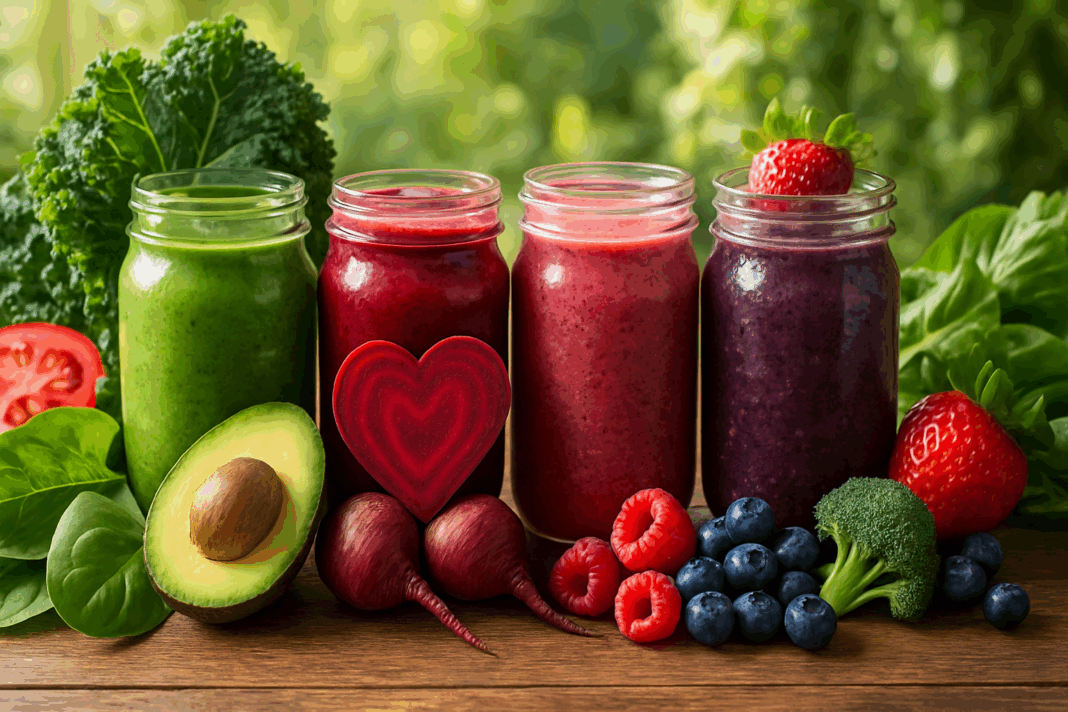In recent years, smoothies have evolved from trendy breakfast options to vital tools in managing chronic conditions. For individuals dealing with both diabetes and high blood pressure, the right smoothie isn’t just a refreshing drink—it can be a potent part of a holistic dietary strategy. The question many people ask is, can smoothies help with high blood pressure? And for those managing blood sugar levels, it’s worth asking how specific nutrients in smoothies may affect cardiovascular function and metabolic health.
You may also like: 4 Ways to Have a Healthy Diet: Expert Tips Backed by Science for Better Nutrition and Long-Term Wellness
When created with care and intention, smoothies can become powerful allies in supporting heart health, managing blood pressure, and improving insulin sensitivity. But not all smoothies are created equal. The key lies in understanding how nutrient synergy works and how each ingredient can contribute to—or undermine—your health goals. This article will dive deep into how smoothies for diabetics and high blood pressure can be optimized for maximum health benefit, drawing on medical science, nutritional biochemistry, and practical food therapy.
The Overlap Between Diabetes and Hypertension: A Cardiometabolic Perspective
To understand the role of smoothies in managing these conditions, we first need to explore the metabolic overlap between diabetes and high blood pressure. These two conditions often coexist, and their combination is a significant risk factor for heart disease, stroke, and kidney failure. Insulin resistance, the hallmark of type 2 diabetes, leads to a cascade of physiological changes that include increased sodium retention, endothelial dysfunction, and heightened sympathetic nervous system activity—all of which contribute to elevated blood pressure.
From this perspective, managing one condition can positively impact the other. Dietary strategies that target both insulin sensitivity and vascular function tend to be more effective than interventions that treat each condition in isolation. This is where nutrient-rich smoothies can be especially powerful. When designed appropriately, they can deliver blood sugar-stabilizing fiber, potassium-rich fruits and vegetables, heart-healthy fats, and plant-based proteins—all of which contribute to lowering blood pressure and improving metabolic outcomes.

How Does Smoothie Nutrients Help with High Blood Pressure?
The answer lies in the synergy of whole food ingredients. Unlike processed foods or isolated nutrients, whole ingredients in smoothies offer a complex matrix of vitamins, minerals, antioxidants, and phytonutrients. For example, leafy greens such as spinach or kale are rich in potassium and magnesium, which are well-established minerals that help regulate blood pressure by relaxing blood vessel walls and promoting sodium excretion.
Potassium, in particular, plays a direct role in offsetting the negative effects of sodium. Research shows that increasing potassium intake can be one of the most effective dietary strategies for lowering blood pressure naturally. Meanwhile, ingredients such as flaxseeds and chia seeds offer alpha-linolenic acid (ALA), a plant-based omega-3 fatty acid that supports endothelial health and may reduce arterial stiffness.
Fiber is another major player. Soluble fiber found in oats, berries, and avocado can slow glucose absorption, reduce insulin spikes, and contribute to smoother blood pressure regulation. This is essential for diabetics, as blood sugar volatility can exacerbate vascular inflammation and compromise nitric oxide production—an important mechanism for blood vessel dilation. In this way, the answer to how does smoothie nutrients help with high blood pressure lies in the blend of fiber, antioxidants, healthy fats, and minerals that promote systemic balance.
Glycemic Load and Heart Health: Why It Matters for Smoothie Drinkers
One of the common pitfalls for people with diabetes or high blood pressure is the assumption that all fruit smoothies are healthy. While fruits are rich in antioxidants and essential vitamins, they also vary widely in glycemic load—a measure of how quickly a food raises blood sugar levels. High-glycemic fruits like bananas, pineapples, and mangoes can cause rapid glucose spikes when consumed in large amounts or in isolation, especially in the absence of protein or fiber.
For people managing both conditions, it’s critical to prioritize low-glycemic fruits such as berries, green apples, and pears. These not only support stable glucose levels but also contain anthocyanins—bioactive compounds with anti-inflammatory and vasodilatory effects. Adding protein-rich ingredients like Greek yogurt, tofu, or unsweetened plant-based protein powder can further buffer glucose absorption and enhance satiety.
In essence, a smoothie’s impact on heart health is not just about its ingredient list but also how those ingredients interact in terms of glycemic load, fiber content, and nutrient balance. When curated mindfully, these drinks can act like foods that lower your blood pressure instantly, at least in the short term, by relaxing blood vessels and reducing sympathetic nervous activity.
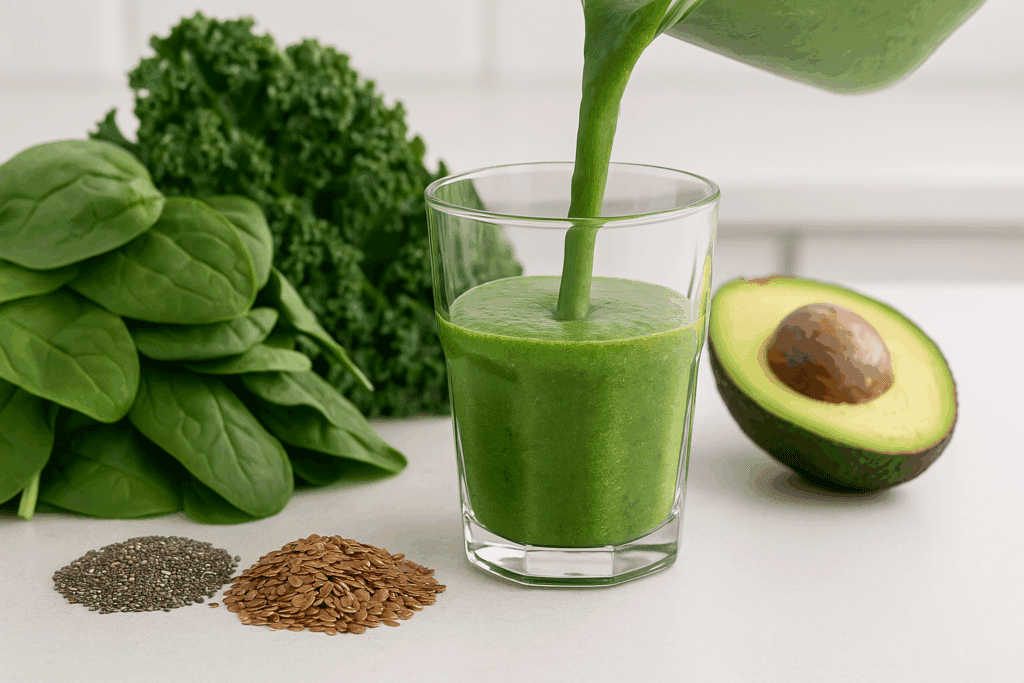
Natural Medication to Lower Blood Pressure: Food as Functional Therapy
For individuals looking for a high blood pressure cure natural way, smoothies offer a convenient and enjoyable form of functional nutrition. Specific foods, when used regularly, have pharmacological effects on the body. Beets, for example, are high in dietary nitrates, which the body converts into nitric oxide—a compound that helps widen blood vessels and improve blood flow. Clinical studies have shown that beetroot juice can reduce both systolic and diastolic blood pressure within hours of consumption.
Similarly, hibiscus tea, when cooled and added to a smoothie base, brings potent polyphenols that act as ACE inhibitors, mimicking the mechanism of common blood pressure medications. Celery contains phthalides, which relax the smooth muscles of the arteries and reduce stress hormone levels. These are not magic bullets, but when consumed consistently, they work as natural medication to lower blood pressure with cumulative benefits.
For diabetics, cinnamon can be a valuable addition—not only for flavor but for its role in enhancing insulin sensitivity. A half teaspoon of Ceylon cinnamon in a smoothie can help modulate post-meal glucose levels and reduce inflammation, creating a heart-friendly metabolic environment.
Smart Ingredient Choices for Smoothies for Diabetics and High Blood Pressure
A thoughtfully constructed smoothie begins with a strong foundation of non-starchy vegetables, which provide bulk without spiking blood sugar. Spinach, cucumber, zucchini, and even cauliflower can be blended into creamy, low-glycemic bases. These vegetables are rich in magnesium and nitrates, both of which support vascular function.
Next, the addition of fiber-rich, low-sugar fruits—such as blueberries, raspberries, and pomegranate arils—adds a burst of antioxidants without compromising glycemic control. These fruits have been studied for their ability to reduce oxidative stress and support endothelial health, making them excellent foods good for blood pressure and overall cardiovascular wellness.
Healthy fats are essential, not only for nutrient absorption but also for promoting satiety and hormonal balance. A tablespoon of almond butter, a few slices of avocado, or a teaspoon of flaxseed oil can create a creamy texture while contributing monounsaturated fats that help manage inflammation and lipid levels.
When it comes to protein, unsweetened Greek yogurt, silken tofu, or pea protein powder can be excellent additions. Protein not only blunts the blood sugar response but also helps regulate hunger hormones like ghrelin and leptin. For individuals with both diabetes and hypertension, this dual benefit is crucial in preventing overeating and promoting steady energy levels.
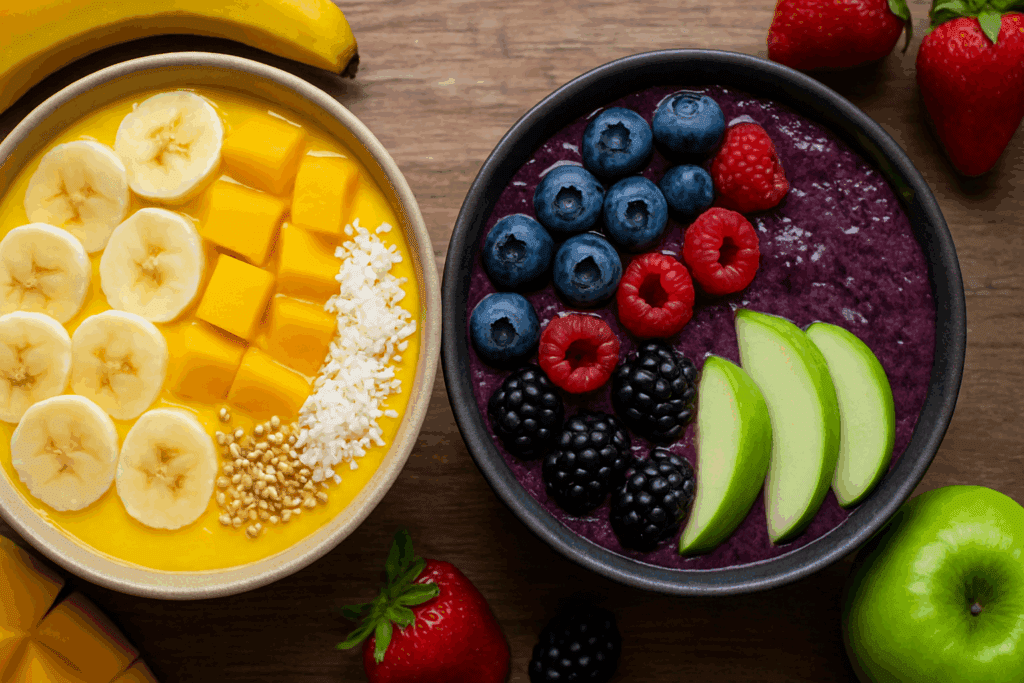
Hydration and Electrolyte Balance in Blood Pressure Control
Often overlooked, hydration plays a key role in maintaining blood pressure equilibrium. Dehydration can cause the body to retain sodium, narrow blood vessels, and increase heart rate—factors that elevate blood pressure. Smoothies made with hydrating bases such as coconut water, unsweetened almond milk, or herbal teas like rooibos can contribute to fluid balance while offering additional micronutrients.
Electrolyte balance is especially important for those on medications like diuretics, which can deplete potassium and magnesium. Including ingredients like spinach, banana (in moderation), and seeds can help restore this balance naturally. These additions serve as both high blood pressure natural remedies and tools for blood sugar regulation, making them ideal for multifunctional smoothie formulations.
The Role of Antioxidants and Polyphenols in Vascular Health
Another layer of benefit comes from the rich antioxidant content found in certain smoothie ingredients. Polyphenols—plant-based compounds with potent antioxidant effects—help reduce oxidative stress, a key driver of endothelial dysfunction and atherosclerosis. Berries, dark chocolate (in small amounts), green tea, and red cabbage are all high in polyphenols and can be blended into creative smoothie recipes.
Polyphenols also modulate nitric oxide availability, enhance mitochondrial function, and support microbiome diversity, all of which contribute to better cardiovascular outcomes. For people searching for foods that lower your blood pressure instantly, these compounds offer a scientifically supported mechanism of rapid action, particularly when consumed regularly over time.
Timing and Frequency: When to Drink Smoothies for Maximum Benefit
Timing can influence how effective your smoothie is for managing blood sugar and blood pressure. Drinking a nutrient-rich smoothie in the morning can set the tone for balanced glucose and insulin levels throughout the day. Morning smoothies that combine protein, fiber, and fat help blunt cortisol spikes and promote metabolic efficiency.
Post-workout smoothies can also be beneficial, especially when they include protein and anti-inflammatory ingredients like turmeric or ginger. These additions help reduce exercise-induced inflammation and improve recovery, while also supporting vascular dilation and glucose uptake.
For people experiencing low energy due to fluctuating blood sugar or blood pressure levels, mid-afternoon smoothies can help stabilize both. These drinks can serve as good food for low BP episodes by restoring fluid, electrolyte, and calorie balance, especially when they include natural sodium from celery or sea salt.
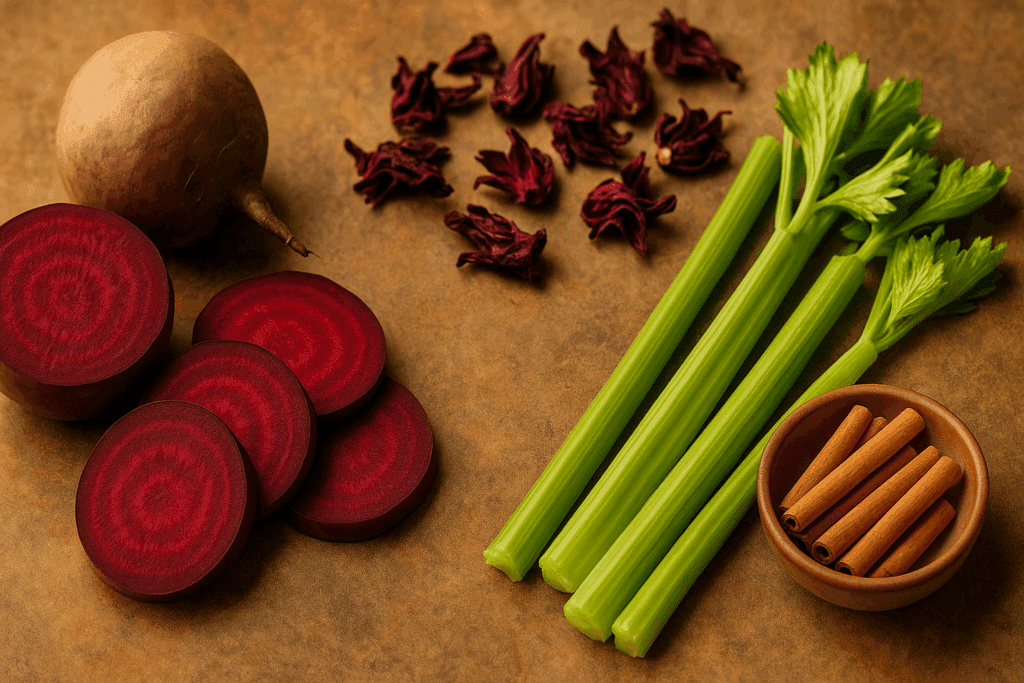
Debunking the Myth: Does Not Eating Lower Blood Pressure?
Fasting is often touted as a quick fix for various health issues, including blood pressure. But the idea that not eating lowers blood pressure is a misunderstanding of how the body regulates hemodynamics. While caloric restriction and weight loss can indeed improve blood pressure over time, skipping meals—especially for diabetics—can lead to hypoglycemia, stress hormone release, and even rebound hypertension.
Smoothies offer a middle ground: they are nourishing without being overly caloric, and they can deliver targeted nutrients in a digestible, efficient form. Instead of relying on restrictive patterns, using smoothies to support cardiovascular and metabolic stability provides a more sustainable, evidence-based approach to health management.
Smoothies as a Practical Part of a Holistic Lifestyle Plan
No single food or drink can replace the benefits of a healthy lifestyle. Smoothies should be part of a broader strategy that includes regular physical activity, stress management, and adequate sleep. When used this way, smoothies for diabetics and high blood pressure can become daily rituals that reinforce healthy behaviors and provide measurable improvements in energy, focus, and well-being.
Adding leafy greens to your morning blend is not just a symbolic gesture—it’s a deliberate step toward better vascular health. Choosing ingredients that double as natural medication to lower blood pressure turns your kitchen into a pharmacy powered by nature. And understanding how does smoothie nutrients help with high blood pressure empowers you to take control of your health with every sip.
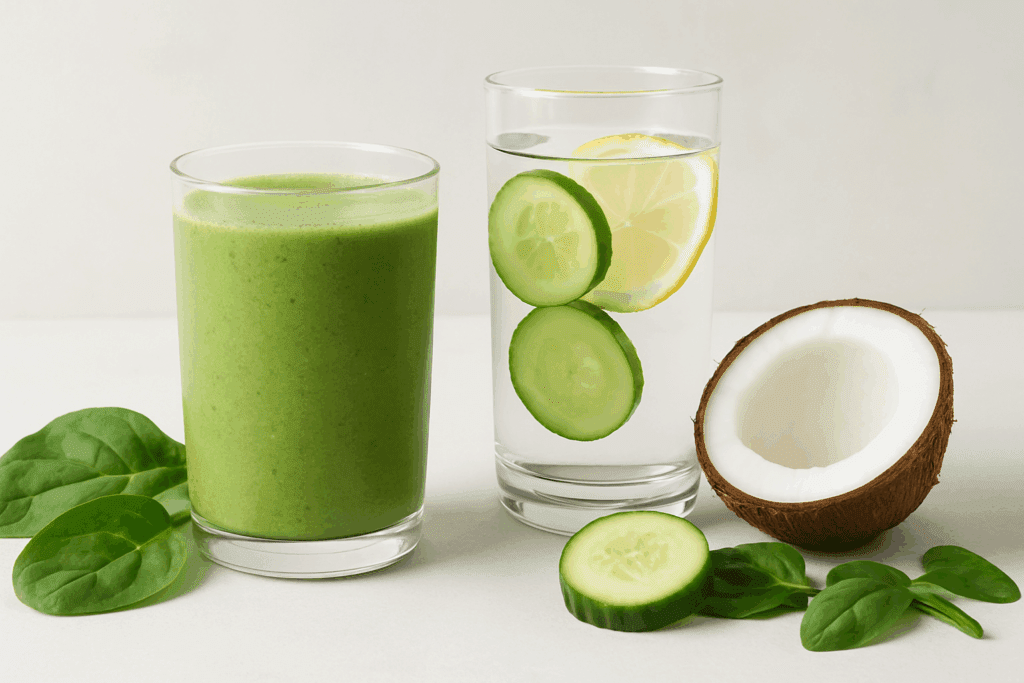
Frequently Asked Questions: Smoothies for Diabetics and High Blood Pressure
1. Can smoothies help with high blood pressure even if I’m already taking medication?
Yes, smoothies can complement medical treatment for hypertension when used strategically. While medications are essential for managing chronic high blood pressure, lifestyle and dietary interventions can amplify their effectiveness. When crafted with blood pressure-lowering nutrients—like magnesium, potassium, and antioxidants—smoothies support vascular flexibility and reduce systemic inflammation. This is particularly important because hypertension medications don’t address dietary imbalances that may exacerbate the condition. If you’re asking whether can smoothies help with high blood pressure beyond what medication provides, the answer lies in their ability to target underlying nutritional deficits and lifestyle-related factors.
2. What’s the connection between insulin resistance and blood pressure, and how do smoothies fit in?
Insulin resistance doesn’t just affect blood sugar; it also contributes to elevated blood pressure by promoting sodium retention and stiffening blood vessels. Smoothies that include ingredients rich in soluble fiber and omega-3 fatty acids—such as flaxseeds, oats, or chia—may improve insulin sensitivity while supporting endothelial function. The benefit of smoothies for diabetics and high blood pressure is their potential to address both conditions simultaneously through synergistic nutrient action. Over time, lowering insulin resistance with diet can reduce the hormonal triggers that elevate blood pressure, making smoothies an effective part of an integrated cardiometabolic care plan.
3. How does smoothie nutrients help with high blood pressure in the long run?
The nutrients in smoothies, especially when consumed daily, contribute to cumulative improvements in cardiovascular health. Magnesium, found in leafy greens and seeds, helps regulate vascular tone, while polyphenols from berries and green tea reduce oxidative stress in arteries. Over time, these benefits translate to better nitric oxide availability and improved blood vessel elasticity. The real answer to how does smoothie nutrients help with high blood pressure is through consistent nourishment that supports long-term vascular remodeling and metabolic resilience. It’s not about a single “superfood,” but rather a consistent pattern of smart ingredient combinations.
4. Are there specific ingredients to avoid in smoothies if you have both diabetes and high blood pressure?
Yes—certain ingredients can be counterproductive for individuals with both conditions. Avoid high-glycemic fruits like mangoes or pineapples unless they’re carefully balanced with protein and fiber. Also steer clear of added sugars, even in the form of honey or agave, which can cause glucose spikes and trigger inflammatory responses that may raise blood pressure. Sodium-rich protein powders or processed nut butters should also be minimized. When planning smoothies for diabetics and high blood pressure, prioritize natural, whole foods with minimal sodium and low sugar content to ensure both blood sugar and blood pressure remain stable.
5. Can smoothies help with high blood pressure when consumed at a specific time of day?
Emerging research suggests that the timing of nutrient intake may influence metabolic outcomes. Drinking a well-balanced smoothie in the morning can help regulate cortisol levels and improve vascular response throughout the day. Post-workout smoothies also support vasodilation and recovery, especially when they include ingredients like beetroot or tart cherry. In this context, answering can smoothies help with high blood pressure includes understanding how circadian rhythms and nutrient timing interact. For optimal benefit, choose smoothies that combine complex carbs, protein, and heart-healthy fats and consume them during metabolically active times.
6. How does smoothie nutrients help with high blood pressure when dealing with chronic stress?
Chronic stress triggers the release of cortisol and adrenaline, which constrict blood vessels and elevate blood pressure. Nutrients like magnesium, vitamin C, and L-theanine (found in green tea) can modulate the stress response by supporting neurotransmitter balance and reducing oxidative damage. Smoothies that include adaptogenic herbs like ashwagandha or maca, along with calming foods such as banana and oats, may help regulate stress-induced blood pressure spikes. Understanding how does smoothie nutrients help with high blood pressure includes recognizing their role in stress physiology and hormonal modulation. Incorporating calming, nutrient-rich ingredients into your daily routine can buffer the impact of long-term stress on the cardiovascular system.
7. What are the long-term benefits of using smoothies for diabetics and high blood pressure?
The long-term advantages include improved endothelial function, reduced medication dependency, better weight management, and enhanced metabolic flexibility. Regular intake of functional smoothies supports liver detoxification, gut microbiome health, and micronutrient sufficiency—all of which are critical in reversing the root causes of cardiometabolic disease. Over time, these benefits accumulate to lower cardiovascular risk, reduce inflammatory markers, and improve energy levels. The use of smoothies for diabetics and high blood pressure is not just about acute symptom relief, but about creating an anti-inflammatory dietary pattern that promotes resilience and longevity. Consistency is key to seeing sustainable changes in blood pressure and glycemic control.
8. Can smoothies replace meals for people with diabetes and high blood pressure?
In some cases, yes—but only when the smoothies are nutritionally complete. A well-designed smoothie that includes protein, fiber, healthy fats, and micronutrients can replace a meal and offer metabolic benefits without blood sugar spikes. This is particularly helpful for those with erratic eating schedules or morning appetite loss. However, portion control and macronutrient balance are essential. If you’re using smoothies for diabetics and high blood pressure as meal replacements, consult a registered dietitian to ensure you’re meeting daily nutritional needs while managing both conditions effectively.
9. How can smoothies be adapted to cultural or dietary preferences while still helping with high blood pressure?
Smoothies are highly adaptable to diverse culinary traditions. For example, in Mediterranean diets, ingredients like olive oil, figs, and Greek yogurt can be used to support heart health. In Asian cuisines, tofu, matcha, and goji berries provide antioxidants and protein without excess sugar or sodium. Understanding regional superfoods and how they interact with vascular and glucose metabolism is key to customizing effective smoothies for diabetics and high blood pressure. This cultural tailoring not only improves adherence but also makes it easier to integrate healing foods into everyday life without sacrificing flavor or heritage.
10. What innovations are emerging in smoothie science for people with cardiometabolic concerns?
The future of therapeutic smoothies includes advances in nutrigenomics, where ingredients are tailored to your unique genetic makeup and metabolic profile. There is also growing interest in incorporating prebiotic and probiotic elements—like kefir or resistant starches—to support gut-brain-heart interactions. Some clinical nutritionists are even using continuous glucose monitors (CGMs) to test how specific smoothie combinations affect individual responses in real time. These personalized approaches could redefine how smoothies for diabetics and high blood pressure are formulated, moving from generic recipes to precision nutrition strategies. As science advances, so will our ability to harness smoothie ingredients for targeted, measurable health outcomes.

The Final Blend: How Smoothies Offer a Natural Solution for Managing Diabetes and High Blood Pressure
In the realm of functional nutrition, smoothies represent one of the most versatile and accessible tools for addressing chronic conditions. They offer a flexible platform for delivering antioxidants, fiber, healthy fats, and essential minerals in a single serving. For those grappling with the dual burden of diabetes and hypertension, smoothies can serve as both nourishment and medicine.
More than just convenient drinks, they are micro-meals engineered to balance glucose levels, lower systemic inflammation, and optimize vascular function. From beets and berries to flaxseed and cinnamon, the right ingredients can mimic the effects of pharmaceutical interventions—without the side effects. For anyone searching for a high blood pressure cure natural way, the solution may lie in what you choose to blend.
As you explore this approach, remember that consistency matters more than perfection. By incorporating smoothies into a daily routine and pairing them with an active, mindful lifestyle, you’ll find that nutrition isn’t just about avoiding disease—it’s about building a vibrant, resilient foundation for long-term health. So yes, can smoothies help with high blood pressure? Absolutely—when done right, they can nourish your heart, steady your blood sugar, and offer delicious, sustainable ways to reclaim your well-being.
Further Reading:
Green smoothie with spinach, cucumber, and pineapple


